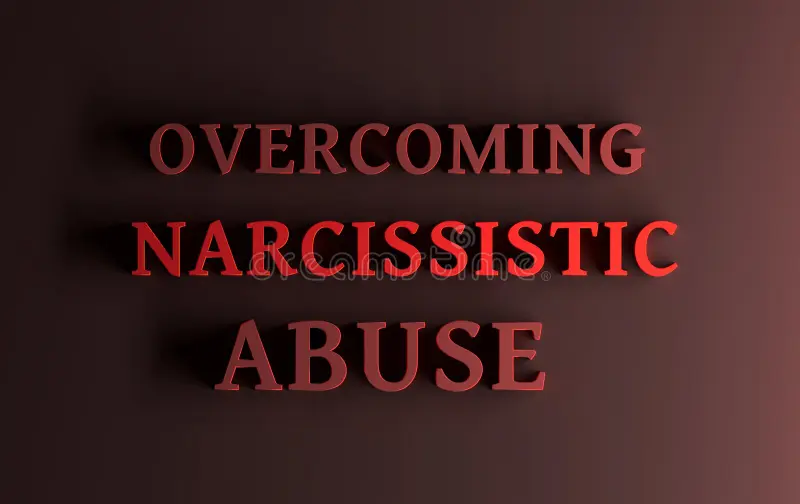Understanding Narcissistic Abuse: A Comprehensive Guide
Narcissistic abuse is a deeply complex form of emotional and psychological manipulation. When you’re caught in the whirlwind of this kind of mistreatment, it can be hard to recognize it, let alone escape. But fear not! You’re not alone, and there’s hope at the end of the tunnel. This guide will help you understand what narcissistic abuse is, the signs to look out for, and how you can break free from its grip.
What is Narcissistic Abuse?
Narcissistic abuse occurs when someone with narcissistic traits—such as an inflated sense of self-importance, lack of empathy, and a constant need for admiration—uses manipulation and control tactics to dominate another person. These behaviors can cause long-lasting emotional and psychological damage to the victim.
The abuser thrives on power and control, often making their victim feel inferior, confused, or even questioning their own reality. However, understanding narcissistic abuse is the first step toward healing and regaining control of your life.
Key Characteristics of Narcissistic Abuse
To fully grasp the gravity of narcissistic abuse, let’s dive into some of the common characteristics and behaviors narcissists use to manipulate and control their victims:
- Gaslighting: This is a form of emotional manipulation where the abuser makes the victim doubt their own memories or perception of reality. The victim may feel like they’re going crazy because the narcissist constantly denies the truth or twists facts.
- Devaluation: After an initial phase of idealization, where the victim feels adored and admired, the narcissist suddenly flips and starts devaluing them. This often involves criticism, blame-shifting, and insults.
- Love Bombing: Narcissists are experts at showering their victims with affection, gifts, and praise in the early stages of a relationship. This tactic hooks the victim in, creating a false sense of security.
- Triangulation: The narcissist brings in a third party to create jealousy or competition, further manipulating the victim and playing mind games.
Who Can Be A Victim of Narcissistic Abuse?
Narcissistic abuse doesn’t discriminate. It can happen to anyone—whether in a romantic relationship, family dynamic, friendship, or even in the workplace. Typically, empathetic and kind-hearted individuals are more likely to fall prey to narcissists because they’re easier to manipulate.
However, it’s important to remember that being a victim of narcissistic abuse doesn’t mean you’re weak. On the contrary, narcissists target strong individuals and slowly break them down to feel in control.
The Impact of Narcissistic Abuse on Victims
Narcissistic abuse can leave a lasting impact on a victim’s emotional and mental well-being. Some of the common effects include:
- Low Self-Esteem: Constant criticism and manipulation can shatter the victim’s self-confidence.
- Anxiety and Depression: Victims often experience overwhelming feelings of sadness and worthlessness.
- PTSD and Complex PTSD: Prolonged exposure to narcissistic abuse can result in post-traumatic stress disorder or its more severe form, complex PTSD.
- Difficulty Trusting Others: After being betrayed and manipulated, victims may struggle to trust people again.
How to Recognize Narcissistic Abuse
Recognizing narcissistic abuse can be challenging because narcissists are often charming and charismatic, especially in the beginning. However, over time, their controlling and manipulative behavior starts to surface.
Red Flags to Watch Out For
- Excessive Need for Admiration: Narcissists crave attention and admiration, expecting constant praise.
- Lack of Empathy: Narcissists struggle to understand or care about the feelings of others.
- Controlling Behavior: Whether it’s through financial means, emotional manipulation, or isolation, narcissists control every aspect of the victim’s life.
- Blame Shifting: Nothing is ever their fault. Narcissists will always find a way to shift the blame onto others.
If you’re experiencing these behaviors in a relationship, it’s essential to take a step back and assess whether you’re being subjected to narcissistic abuse.
The Cycle of Narcissistic Abuse
Narcissistic abuse often follows a predictable cycle. Understanding this cycle can help you identify where you are in the relationship and give you the courage to take steps toward breaking free.
The Idealization Phase
In this phase, the narcissist will make you feel like the most important person in the world. They’ll shower you with love, compliments, and attention—a tactic known as love bombing.
The Devaluation Phase
Once the narcissist feels they’ve got you hooked, they begin to devalue you. This can manifest as verbal abuse, constant criticism, or emotional neglect. You may feel like you can never do anything right, no matter how hard you try.
The Discard Phase
Eventually, the narcissist will discard you when they feel you’re no longer useful to them or when they’ve found a new source of supply. This phase can be incredibly painful for the victim, as they often feel blindsided by the sudden rejection.
Breaking Free from Narcissistic Abuse
Breaking free from narcissistic abuse can be one of the most challenging things you’ll ever do. However, it’s also one of the most empowering. Here are some steps you can take to escape the clutches of narcissistic abuse:
Set Boundaries
Narcissists thrive on crossing boundaries. Therefore, setting firm, clear boundaries is essential. Be assertive about what behaviors are acceptable and stick to them.
Go No Contact or Grey Rock
- No Contact: If possible, cut off all communication with the narcissist. This may involve blocking them on social media, changing your phone number, or even moving to a new location if necessary.
- Grey Rock Method: If cutting off contact isn’t an option, such as in cases of shared custody or a work relationship, the grey rock method is a helpful tool. By becoming as emotionally unresponsive and boring as a “grey rock,” you deprive the narcissist of the emotional reactions they crave.
Seek Professional Help
Narcissistic abuse often leaves deep emotional scars that may require professional help to heal. Therapy, especially trauma-focused therapy, can be a game-changer in helping victims recover and regain their sense of self.
Build a Support System
Having a strong support system is critical. Surround yourself with friends, family, and trusted individuals who can provide emotional support during the healing process.
Healing After Narcissistic Abuse
The road to recovery from narcissistic abuse can be long, but it’s absolutely possible. Healing involves rebuilding your self-esteem, learning to trust again, and letting go of the trauma caused by the abuse.
Steps to Begin the Healing Journey
- Self-Compassion: Treat yourself with kindness and understanding, recognizing that what happened wasn’t your fault.
- Rebuilding Self-Worth: Engage in activities that bring you joy and build your confidence. Rediscover who you are outside of the toxic relationship.
- Journaling: Writing about your experiences and feelings can be a powerful way to process your emotions and track your progress.
| Healing Step | Description |
|---|---|
| Self-Compassion | Treat yourself with kindness and understanding. |
| Rebuilding Self-Worth | Engage in activities that build your confidence. |
| Journaling | Write about your experiences to process emotions. |
| Seek Therapy | Get professional help to guide your healing journey. |
Narcissistic Abuse in the Digital Age
In today’s digital world, narcissistic abuse can also take place online. Cyberstalking, constant monitoring of social media, or public humiliation via digital platforms are common tactics used by narcissists. Be mindful of how the narcissist might be using technology as a tool of abuse.
How to Protect Yourself from Narcissistic Abuse
Learning how to protect yourself from narcissistic abuse is essential, especially if you’ve experienced it before. Here are some practical tips to safeguard your emotional and mental well-being:
- Educate Yourself: Knowledge is power. The more you learn about narcissistic behavior, the better equipped you’ll be to recognize the signs early on.
- Trust Your Instincts: If something feels off, it probably is. Don’t ignore red flags or your gut feelings.
- Build Emotional Resilience: Strengthen your mental fortitude by practicing self-care, setting boundaries, and seeking support.
Conclusion: Hope Beyond Narcissistic Abuse
Narcissistic abuse is painful, but recovery is possible. With the right support, boundaries, and healing practices, you can reclaim your life and build a future free from manipulation and control. Remember, you’re stronger than the abuse, and there’s always hope for a brighter, healthier future.
In the end, recognizing the signs of narcissistic abuse is the key to breaking free and healing. You deserve to be treated with respect and kindness, and no one should ever make you feel otherwise.












Post Comment